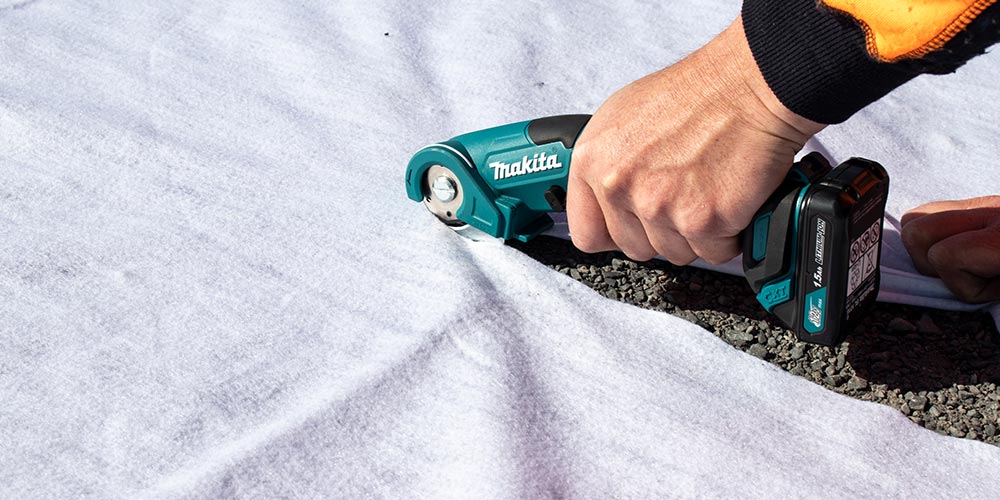When developing an area of land such as a driveway, lawn, retaining wall or pathway, or even around drainage pipes or stormwater systems, SureTex Geotextile helps filter, separate and stabilise both the soil and aggregate layers within your development. It is most commonly placed between the lowest layer of soil or clay (the subsoil layer), and the lower layer of drainage aggregate.
Why should I use geotextile?
Depending on the usage, geotextile fabric:
- Allows water in while filtering soil particles out, ideal for use around drainage pipes
- Separates the various soil and aggregate layers ensuring the compacted subbase maintains its strength and prevents pavement failure.
- Prevents potholes, rutting and degradation of surface layers by stabilising the soil and aggregate structures underneath
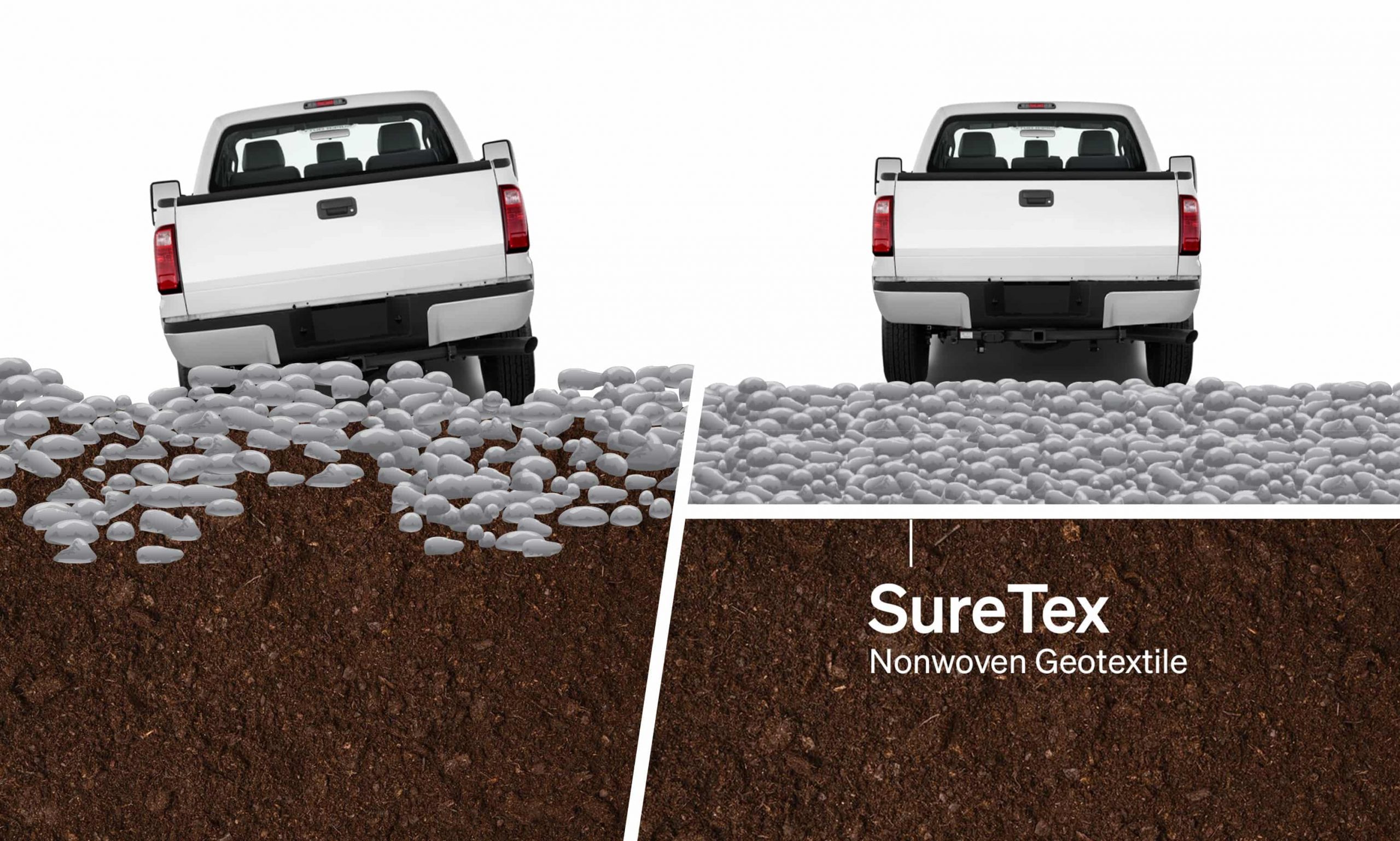
Imagine the different soil layers as a three-tiered sponge cake. The bottom sponge with buttercream on top is your earth then soil or clay foundation. The middle sponge is your geotextile fabric, followed by a creamy, fruity layer of drainage aggregate, then the top sponge with icing, cream, or, fruit ring being your chosen reinforcement layer and surface grass or pebbles. If you took that middle sponge away, the two, creamy layers (the subsoil and the drainage aggregate) would mix into an unstable (but probably delicious) blob of fruit and cream, meaning the top sponge would slip, fall, and eventually collapse. Your neighbour would win top prize for ‘sponge cake of the year’’, while all you are left with is regrets, thinking why didn’t I stabilise that lower layer? (Is it just me, or is anyone else hungry?)
How can geotextile fabric improve and extend the life of my drainage pipes?
Perhaps the simplest example of a geotextile’s functions is protecting and enhancing drainage areas. When installing new drainage pipes, consider digging a larger trench, line the trench with geotextile, then fill with drainage aggregate around the perforated pipe. By lining the soil/clay trench with geotextile before adding the aggregate and pipe, you separate the two layers, effectively preventing soil from entering the drainage aggregate and clogging up your stormwater system. The geotextile allows water to flow through your drainage aggregate into your clean pipes, maintaining better flow rates and less saturated soils.
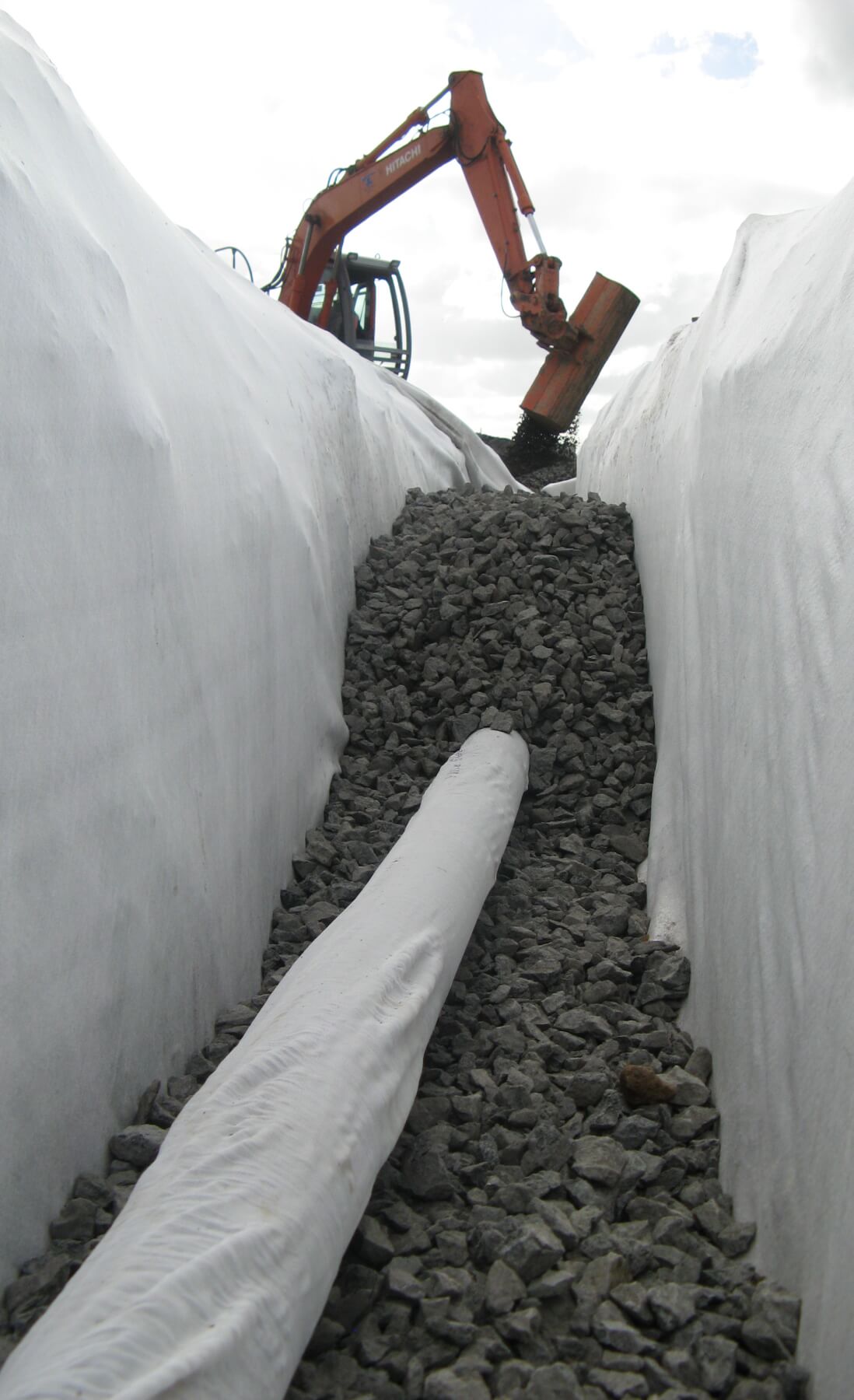
In this case, separation is the geotextile’s primary function, but its secondary function is reinforcement. A layer of geotextile will help stabilise the trench. By preventing the outer soil or clay area from mixing with the aggregate inside, both structures remain solid. Now, you won’t get dipping or collapsed trench lines.
If a larger trench is not an option, you can use Cirtex FilterSleeve directly over the drainage pipe. Filtration fabrics not only trap fine soil particles, preventing them from entering your pipes, but they also protect the pipes from wear and tear, extending the life of your stormwater system. For optimal performance of your stormwater system, combine both methods.
Will geotextile prevent potholes from forming on my driveway?
This is where the combination of filtration, separation and stabilisation really comes into play. When preparing the area to be developed, you’ll want to cut in about 200 mm deep and clear the subsoil layer of any rocks and debris. The next stage is to line the entire area with geotextile, making sure to overlap by at least 100 mm, so that the top layer allows water to flow downhill, over the next layer toward your drainage systems. You’ll then lay your drainage aggregate, such as GAP20 or GAP40, directly on top of the geotextile.
Here, the geotextile serves several purposes.
- It moderates how much water is entering your subsoil layer, preventing it from becoming over saturated and degrading
- It can also help divert water to garden areas instead of being lost underground
- If, over a prolonged period, the subsoil layer did begin to degrade, the high tensile geotextile acts as a separation layer between the subsoil and aggregate
- Separation prevents the drainage aggregate from sinking into the saturated or degraded subsoil layer below
- Even though it is a fabric, it is designed to take the pressure of aggregate pressing and pushing against it, meaning it won’t tear and degrade once covered
- By preventing the aggregate layers from sinking, geotextile helps stabilise the layers above.
- This means your surface areas remain even. No more potholes or puddling!
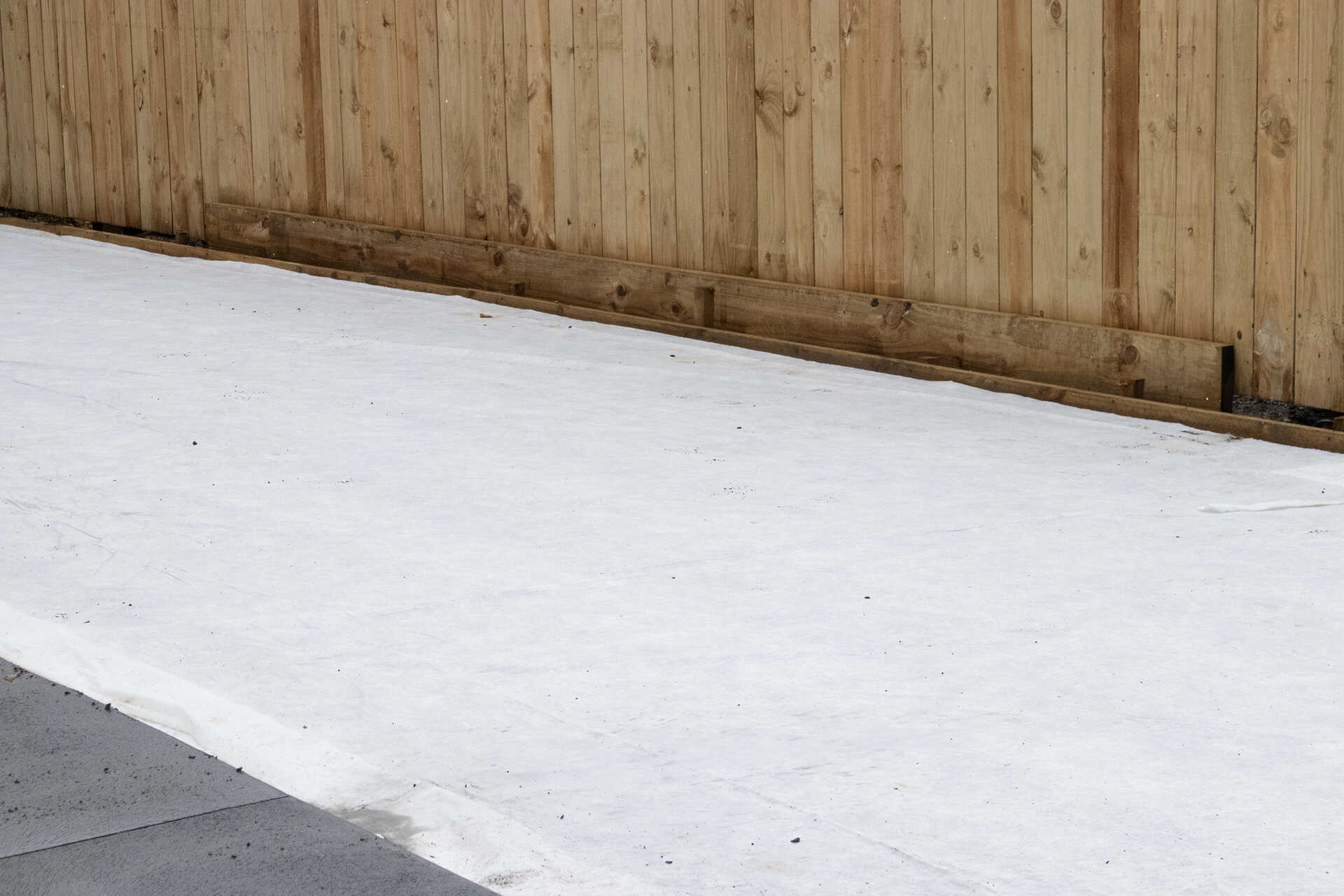
If you don’t use geotextile, you run the risk of having the lower aggregate layers integrate into the subsoil, allowing the upper layers to collapse. This is especially important on driveways or anywhere that vehicles are used. The weight will push the aggregate into the softer soil below, and without filtration, separation and stabilisation, your new driveway won’t stay new for long.
Should I use geotextiles when building retaining walls?
Now that you understand the concept, you can apply geotextile to different applications. Not only does it filter, separate and stabilise soil and aggregate layers, but it also protects structures from unnecessary damage and pressure.
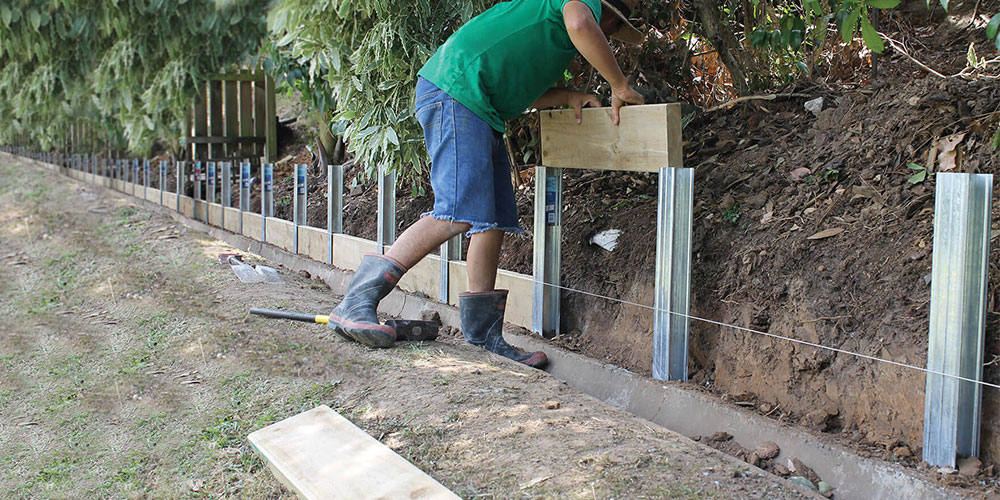
When building a retaining wall with drainage pipe, for example, line the inside of the wall with geotextile, making sure it wraps underneath and around the drainage aggregate area, separating it from the soil. During heavy rainfall, the soil will naturally soak up that water. It will become heavy and put extra pressure onto the wall and aggregate layer. Geotextile will prevent the soil from pushing its way into the drainage aggregate and will help keep your retaining wall dry. Without it, unnecessary pressure may push the wall out of shape. Dirt will enter the drainage aggregate area, lessening its drainage capabilities, but will also rest water and soil against your retaining wall, which may cause it to rot or degrade over time. By installing geotextile, you prevent all this from happening, extending the life of your wall.
Summary
Geotextile is a fundamental requirement in any development that requires ground preparation. By filtering, separating and stabilising the various soil and aggregate layers, you set a solid platform so you can enjoy your drive, garden, pathways and patios. It’s all about preparation. After all, if you want to prevent that layered sponge cake from collapsing, you’ve got to bake it right.

